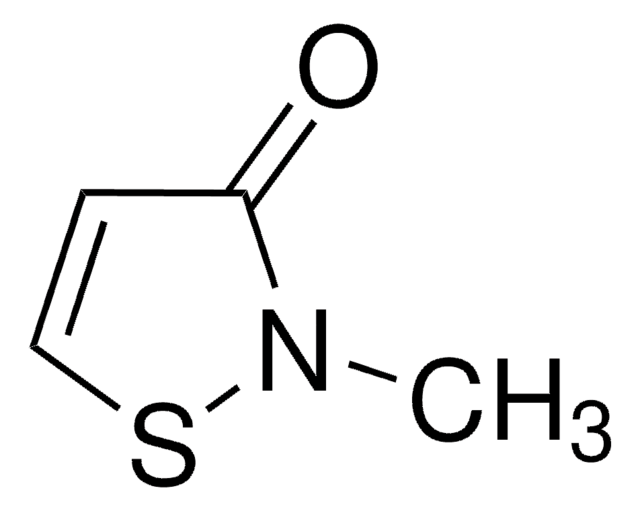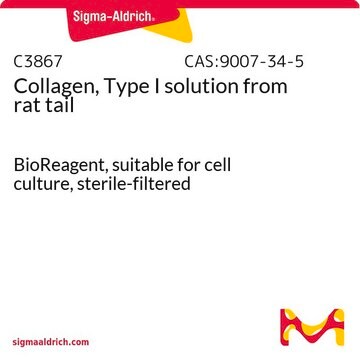SBR00031
MIT HCl Ready Made Solution
(10 mg MIT/mL)
Sinonimo/i:
2-Methyl-1,2-thiazol-3-one, Methylisothiazolinone HCl, Methylisothiazolinone hydrochloride
About This Item
Prodotti consigliati
Stato
liquid
Livello qualitativo
Concentrazione
(10 mg MIT/mL)
1%
Modalità d’azione
protein synthesis | interferes
Temperatura di conservazione
2-8°C
InChI
1S/C4H5NOS.ClH/c1-5-4(6)2-3-7-5;/h2-3H,1H3;1H
SJXPQSRCFCPWQQ-UHFFFAOYSA-N
Cerchi prodotti simili? Visita Guida al confronto tra prodotti
Descrizione generale
Applicazioni
- in research on the effects of the N-methyl D-aspartate (NMDA) receptor antagonist kynurenic acid on human cortical development
- as a cytotoxic substance to investigate its effect on bronchial epithelial cells (BEAS-2B cells) and its role in apoptotic cell death
- to research the effects of tyrosine phosphorylation on focal adhesion kinase (FAK) activity in the development of neural axons and dendrites
Azioni biochim/fisiol
Caratteristiche e vantaggi
- Ready available solution reduce the need for preparation time
- Commonly used in Cell Biology and Biochemical applications
- High quality antibiotic suitable for mulitple research applications
Altre note
Avvertenze
Warning
Indicazioni di pericolo
Consigli di prudenza
Classi di pericolo
Aquatic Chronic 3 - Eye Irrit. 2 - Skin Irrit. 2 - Skin Sens. 1
Codice della classe di stoccaggio
12 - Non Combustible Liquids
Classe di pericolosità dell'acqua (WGK)
WGK 2
Punto d’infiammabilità (°F)
Not applicable
Punto d’infiammabilità (°C)
Not applicable
Scegli una delle versioni più recenti:
Certificati d'analisi (COA)
It looks like we've run into a problem, but you can still download Certificates of Analysis from our Documenti section.
Se ti serve aiuto, non esitare a contattarci Servizio Clienti
Possiedi già questo prodotto?
I documenti relativi ai prodotti acquistati recentemente sono disponibili nell’Archivio dei documenti.
Il team dei nostri ricercatori vanta grande esperienza in tutte le aree della ricerca quali Life Science, scienza dei materiali, sintesi chimica, cromatografia, discipline analitiche, ecc..
Contatta l'Assistenza Tecnica.






